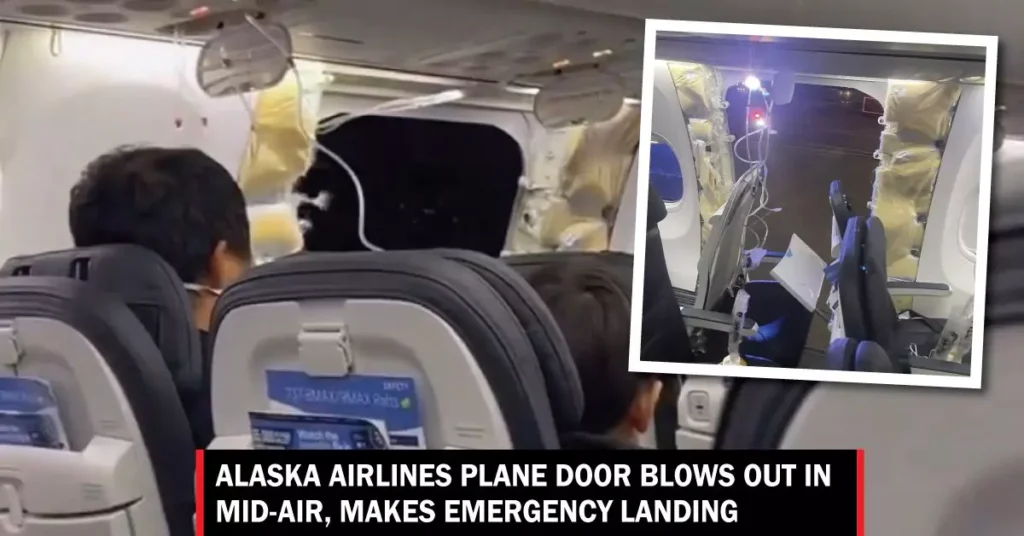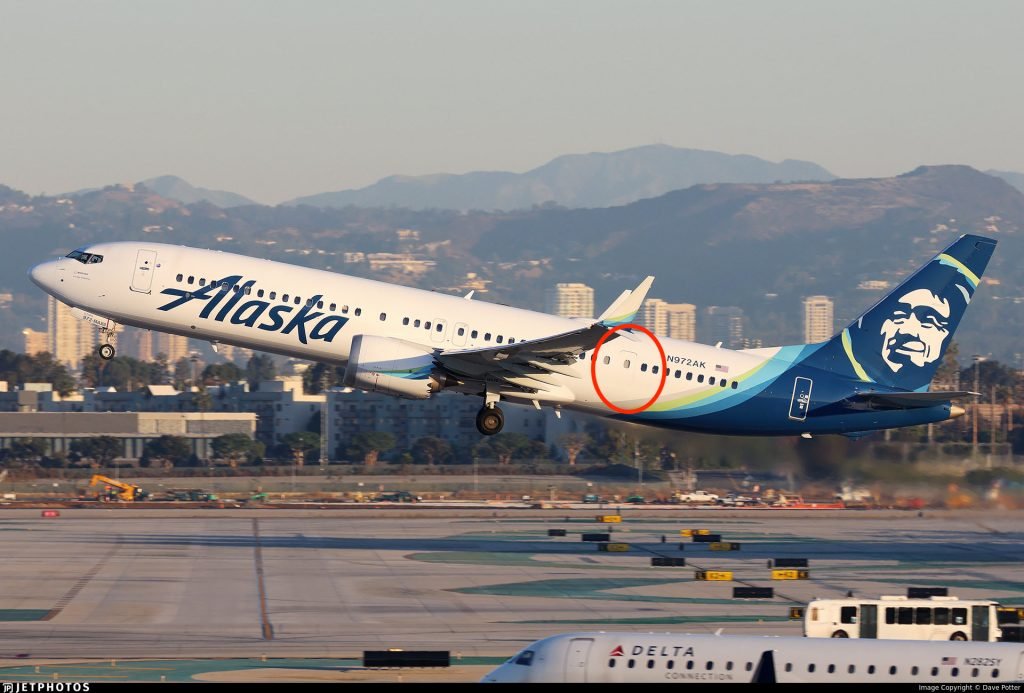On January 5, 2024, Alaska Airlines Flight 1282 encountered a harrowing situation mid-air, involving a Boeing 737-9 MAX aircraft. This flight, which was supposed to be a routine journey from Portland, Oregon, to Ontario, California, turned into an emergency scenario, raising significant concerns about aviation safety. In this article, we will dissect the incident, providing a comprehensive overview of what transpired, the responses of the crew and passengers, and the subsequent actions taken by the airline and regulatory bodies. Understanding such incidents is crucial, not just for aviation enthusiasts but for the general public as well, as it underscores the importance of maintaining rigorous safety standards in the aviation industry.
Background Information

Overview of Alaska Airlines: Established in 1932, Alaska Airlines has grown to be one of the major airlines in the United States, renowned for its customer service and safety record. Based in SeaTac, Washington, the airline operates flights to over a hundred destinations in the United States, Mexico, Canada, and Costa Rica.
Details about the Boeing 737-9 MAX: The Boeing 737-9 MAX is part of the Boeing 737 MAX series, the fourth generation of the Boeing 737, succeeding the Boeing 737 Next Generation (NG). This aircraft series has been under intense scrutiny and faced worldwide grounding following two fatal crashes involving the 737 MAX 8 model. The 737-9 MAX, the model involved in the Alaska Airlines incident, is designed to offer higher efficiency and range, equipped with the latest technology in aviation.
The Incident in Detail
Date and Flight Details: The incident occurred on a winter day in January 2024. Flight 1282, scheduled from Portland to Ontario, was operated by a Boeing 737-9 MAX. The flight had 171 passengers and six crew members aboard.
Description of the Incident Occurrence: Approximately 29 minutes after takeoff, while the aircraft was cruising at an altitude of 16,000 feet, a loud boom resonated through the cabin. This was followed by a rapid decompression caused by the ejection of a door plug, a component used to seal an unused doorway on the aircraft’s fuselage.

Passenger and Crew Response: The situation onboard was fraught with panic and confusion. However, there were no serious injuries reported. The flight crew, trained for such emergencies, quickly responded to stabilize the situation and reassure the passengers.
Emergency Landing: The pilot, adhering to emergency protocols, declared an immediate emergency and rerouted the plane back to Portland International Airport. The aircraft landed safely, averting what could have been a grave situation.

Post-Incident Actions
Aircraft Grounding: In the aftermath of the incident, Alaska Airlines CEO Ben Minicucci announced the grounding of their Boeing 737-9 MAX fleet. This decision affected 65 aircraft and was a precautionary measure to ensure comprehensive safety checks.
FAA and NTSB Involvement: The Federal Aviation Administration (FAA) and the National Transportation Safety Board (NTSB) swiftly got involved in the investigation. The incident raised concerns about the safety of the Boeing 737-9 MAX model, leading to a broader examination by these regulatory bodies.
Inspections and Safety Measures: The FAA mandated immediate inspections of certain Boeing 737 Max 9 planes. Alaska Airlines and other carriers operating this model complied, undertaking thorough inspections to ensure the safety and airworthiness of their fleets.

The response to this incident by Alaska Airlines, the FAA, and the NTSB highlights the ongoing commitment to aviation safety and the need for continual vigilance in the industry. The next sections will delve deeper into the analysis of previous warnings, public scrutiny of the Boeing 737 MAX series, and the future implications for aviation safety.
Analysis of Previous Warnings and Regulatory Response
Discussion of the Previous Warnings: Prior to the Alaska Airlines Flight 1282 incident, there were indicators of potential issues. The aircraft had displayed a warning light related to the fuselage on three occasions (December 7, January 3, and 4), suggesting a maintenance concern. Despite these warnings, the necessary inspections or repairs were not completed in time, which raises questions about the monitoring and response systems in place.

Regulatory Oversight and Airline Responsibilities: This incident brings into focus the critical role of regulatory bodies like the FAA and the responsibilities of airlines towards maintenance and safety. It underscores the need for stringent oversight and prompt response to any safety concerns or warnings. The regulatory bodies are expected to not only set safety standards but also ensure compliance through regular audits and inspections.
Public Scrutiny and the Boeing 737 Max Series
History of Issues with the Boeing 737 Max Series: The Boeing 737 MAX series has been controversial, with a history of technical issues leading to tragic consequences, including two fatal crashes involving the 737 MAX 8 model. These incidents resulted in the global grounding of the fleet and raised serious concerns about the aircraft’s design and software systems.
Public Perception and Airline Responses: The continuous issues have significantly impacted public trust in the Boeing 737 MAX series. Airlines operating these aircraft have had to navigate public fear and skepticism, requiring them to be more transparent about their safety measures and responsive to customer concerns.
The Future of Aviation Safety
Improvements in Safety Protocols: In response to these incidents, there have been concerted efforts to enhance safety protocols. This includes more rigorous testing and certification processes, enhanced pilot training programs, and the implementation of more robust maintenance and inspection routines.
Role of Technology in Aviation Safety: Technological advancements play a pivotal role in the future of aviation safety. Innovations in aircraft design, real-time monitoring systems, and predictive analytics are being increasingly adopted to identify and mitigate potential risks before they lead to incidents.